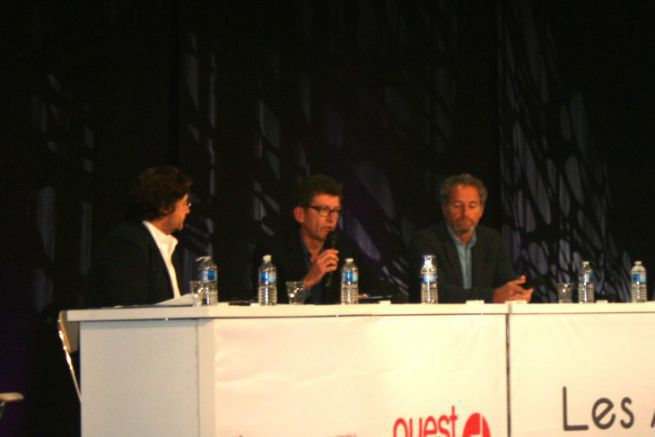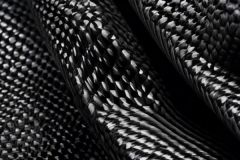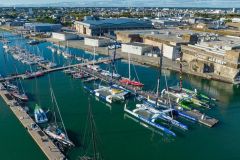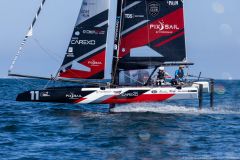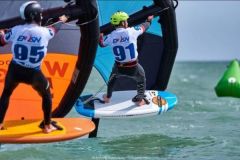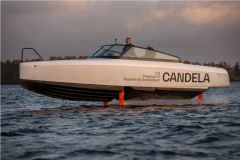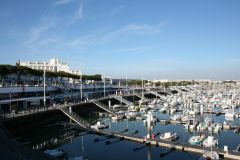Technological contributions to equipment
After a brief historical review of the pioneers of technology in ocean racing, Eric Tabarly and Jean Lacombe, Didier Ravon, moderator of the debate, asked the speakers to mention the major innovation brought by ocean racing in recent decades.
For Michel Desjoyeaux, rope blockers are the deck hardware tool that has changed yachting in recent years. "During the 1st Vendée Globe, Titouan Lamazou had 13 winches on board, today the IMOCA of the 2016 edition have 4, thanks to the blockers. We find the evolution on Mr. Everybody's boat."
Marc Van Peteghem cites advances in electronics, particularly autopilot, a time reserved for offshore racing yachts and now present on all pleasure boats. Technical clothing has also developed thanks to the experience of professionals.
The new, lighter vests and more affordable distress beacons are also mentioned. By using them, offshore racers also make the general public aware of the importance of on-board safety.
New design tools
Architect Marc Van Peteghem points out that the drop in prices now makes fluid mechanics calculation tools accessible for designing recreational units, whereas they were previously reserved for racing.
The design of the rigid wing for the America's Cup also led his VPLP cabinet to work on a"hybrid automatic" wing for yachting.
Sometimes consulted by pleasure boatyards with his company Mer Agitée, Michel Desjoyeaux says he brings his vision of simplicity of use. "A tired offshore runner or an untrained boater both need simple solutions to avoid making mistakes."
Beware of fashion effects
Michel Desjoyeaux insists on the sometimes negative effects of ocean racing on yachting. He cites as an example the fashion for straight bows, which the new gauges justify for offshore racing, but which pose problems for the use of the anchor. The delfinières, added to deport the anchor's point of fire, protrude over the pontoons once in port and are dangerous.
The skipper also cites the example of the bi-safran, justified on the extra wide hull of an IMOCA, but rarely on cruisers. The legitimate desire to own a boat resembling that of the champions makes here lose the yachtsman in manoeuvrability. For Michel Desjoyeaux,"we have to distinguish between contribution and modes. "
Soft energies, many limits...
When asked about the non-thermal energies on board, the two speakers distinguished the aspects of propulsion and comfort on board. The energy for life on board can easily be provided by solar panels, wind turbines or hydrogen generators and some batteries, however the propulsion requirements are higher. Out the more comfortable the boat, the heavier it is, the more wind it needs to sail and therefore the more it uses the engine. Then he needs more batteries, which make him even heavier. Marc Van Peteghem therefore envisages electric propulsion for cruising only for Spartan and high-performance cruising yachts.
Foils, not yet for all
Development par excellence of ocean racing today, what about pleasure boats? For Michel Desjoyeaux, it's not for tomorrow. "The Archimedean sailboat still has a bright future in cruising. If there is little wind, the foil is not useful and few boaters sail above 25 knots. "The tariff is now also a brake.
For Marc Van Peteghem, the foil on a Lagoon, too heavy, is not up to date, but on an intermediate catamaran with performances pulled towards the race, it is possible.
Offshore racing boosts pleasure boating
At the end of their debate, everyone expressed their vision of the influence of ocean racing on yachting.
For Michel Desjoyeaux,"Offshore racing is a driving force for yachting in the dynamics it gives, just like Bernard Moitessier who inspired my generation. But not all technologies are transferable and so much the better."
Marc Van Peteghem says:"The race has become so professionalized, with skippers who are supermen, that the walk between the two worlds is getting bigger and bigger. Fortunately there are still more human references like the transquadra."

